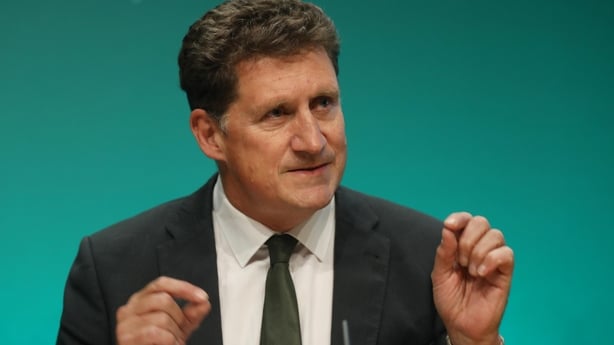Environment Minster Eamon Ryan wanted to cut in half the dividend being paid to the state by the ESB so that the company could reinvest its profits in energy infrastructure and renewables.
However, he was told there could be "possible reputational issues" if ESB was seen to cut its dividends with a risk of a "negative outlook" from credit rating agencies.
This created a risk the electricity supply company would face a "negative impact" in trying to finance its existing plans for investment.
In discussions, Minister Ryan suggested cutting the dividend being paid on after-tax profits by ESB from 40% to 20%, according to records released under Freedom of Information.
He said the existing "large dividend" from the company had been set when the state "needed more shareholder return".
A submission said Minister Ryan believed a 20% level of dividend was "more appropriate" and would allow for reinvestment of more profits by ESB, especially for green energy projects.
"Note that at the current gas and carbon price, the delivery of more renewables directly saves the consumers and taxpayers of Ireland significant costs," the submission said.
However, the Department of Public Expenditure disagreed with the move.
It said an assessment of ESB dividends had been carried out by NewERA - the state's financial advisory service - in 2021 "remains valid".
The department said that even with a 40% dividend that ESB should still be able to finance its ambitious plans for electricity networks, renewables and other areas.
The submission said: "We do not see any evidence to support the contention that a lower dividend is necessary for the company to make the required investments,"
"Introducing uncertainty into ESB's outlook via a review of dividend policy could actually have a negative impact on [their] ability to finance its capital investment programme," it added.
It also warned that the plan would in effect be asking the Exchequer - and Irish taxpayers - to take on a greater share of the cost of decarbonisation.

The submission added that there were alternatives if ESB needed to raise extra funding including the sale of assets, partnership programmes, and slowing investment in "non-core" activities like the rollout of broadband.
The department concluded by saying that the higher 40% dividend expected from ESB had already been factored into revenue and spending decisions made by government.
"As such, any reduction in projected Exchequer incoming receipts from dividends would have implications for the spending levels committed to in the National Development Plan Review," it added.
The Department of Environment's own financial advisor said proposals around cutting the dividend were "a reasonable request" from Minister Ryan.
He suggested an analysis of how it would affect ESB, as well as the possibility of setting the dividend at its 40% rate for five years, rather than ten.
A final submission for Minister Ryan from his officials recommended retention of the 40% dividend on profit after tax as providing the "most certainty".
However, it suggested that rather than maintain this rate for ten years as requested by ESB, a review should instead take place in 2026.
Asked about the records, a spokesperson for the Department of the Environment said dividend policies for commercial state bodies can be revisited from time to time by ministers.
"In line with existing dividend policy, equating to a pay-out level of 40% of adjusted profit after tTax, ESB would be expected to return significantly higher dividends to the State for this financial year. Given the current energy market volatility, forecasts are highly indicative at this juncture," the spokesperson said.
"Our long-term priority and the best long-term approach for Ireland is to insulate consumers from volatility on international wholesale energy markets, to invest in energy efficiency, renewable energy and expand interconnection with European and neighbouring markets and deepen internal market integration," the spokesperson added.
Reporting by Ken Foxe

